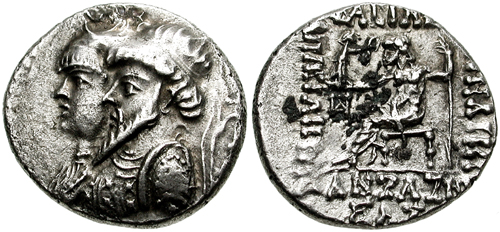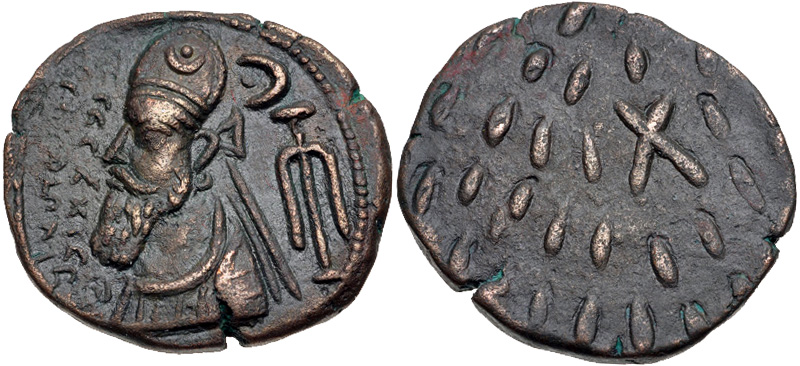|
Kamnaskires III
Kamnaskires III (also spelled Kammashkiri III) was the Kamnaskirid king of Elymais from 82/1 BC to 75 BC. Elymais had since 124 BC been under complete Parthian control. However, in 81/80 BC, coins of king Kamnaskires III and his wife Anzaze Anzaze was a queen of the Elymais (a Parthian vassal kingdom in what is now Iran Iran, officially the Islamic Republic of Iran, and also called Persia, is a country located in Western Asia. It is bordered by Iraq and Turkey to th ... appears, which indicates that the kingdom had been restored. According to Babylonian sources, the incumbent Parthian monarch Orodes I () launched an expedition into Elymais in 78 BC, where he defeated Kamnaskires III. Kamnaskires III was not deposed, however, and continued ruling the kingdom now as a Parthian vassal. Kamnaskires III's successor is unknown, however, it is known that Kamnaskires IV ruled Elymais from 62/1 BCE. References Sources * (2 volumes) * *G. J. P. McEwan: ''A Part ... [...More Info...] [...Related Items...] OR: [Wikipedia] [Google] [Baidu] |
Anzaze
Anzaze was a queen of the Elymais (a Parthian vassal kingdom in what is now Iran Iran, officially the Islamic Republic of Iran, and also called Persia, is a country located in Western Asia. It is bordered by Iraq and Turkey to the west, by Azerbaijan and Armenia to the northwest, by the Caspian Sea and Turkmeni ...). She appears on coins together with king Kamnaskires III (about 82/81 BC to 75. BC following dates on the coins). They perhaps ruled together as on the coins she is called βασιλίσσης (the Genitive case of ''queen'' - βασίλισσα asílissa. Furthermore it was not common on Ancient coins that king and queens appear together, again supporting her special status. Literature *D. T. Potts: ''The Archaeology of Elam'', Cambridge University Press, Cambridge 1999, 399 {{authority control 1st-century BC women rulers Arsacid dynasty of Elymais Ancient queens regnant ... [...More Info...] [...Related Items...] OR: [Wikipedia] [Google] [Baidu] |
Elymais
Elymais or Elamais (Ἐλυμαΐς, Hellenic form of the more ancient name, Elam) was an autonomous state of the 2nd century BC to the early 3rd century AD, frequently a vassal under Parthian control. It was located at the head of the Persian Gulf in Susiana (the present-day region of Khuzestan, Iran). Most of the population probably descended from the ancient Elamites, who once had control of that area. General information The Elymaeans were reputed to be skilled archers. In 187 BC, they killed Antiochus III the Great after he had pillaged their temple of Bel. Nothing is known of their language, even though Elamite was still used by the Achaemenid Empire 250 years before the kingdom of Elymais came into existence. A number of Aramaic inscriptions are found in Elymais. The region's "wealth in silver and gold" is referred to in the deutero-canonical work 1 Maccabees, which refers to Elymais as a "city" of interest to Antiochus IV Epiphanes: the narrative there states that " ... [...More Info...] [...Related Items...] OR: [Wikipedia] [Google] [Baidu] |
Parthian Empire
The Parthian Empire (), also known as the Arsacid Empire (), was a major Iranian political and cultural power in ancient Iran from 247 BC to 224 AD. Its latter name comes from its founder, Arsaces I, who led the Parni tribe in conquering the region of Parthia in Iran's northeast, then a satrapy (province) under Andragoras, who was rebelling against the Seleucid Empire. Mithridates I (r. c. 171–132 BC) greatly expanded the empire by seizing Media and Mesopotamia from the Seleucids. At its height, the Parthian Empire stretched from the northern reaches of the Euphrates, in what is now central-eastern Turkey, to present-day Afghanistan and western Pakistan. The empire, located on the Silk Road trade route between the Roman Empire in the Mediterranean Basin and the Han dynasty of China, became a center of trade and commerce. The Parthians largely adopted the art, architecture, religious beliefs, and royal insignia of their culturally heterogene ... [...More Info...] [...Related Items...] OR: [Wikipedia] [Google] [Baidu] |
Kamnaskires IV
Kamnaskires IV was the Elymais#The Kamnaskirid line, Kamnaskirid king of Elymais from 62/1 BC (or 59/8) to 56/5 BC. References Sources * (2 volumes) * * * {{s-end 1st-century BC monarchs in Asia Vassal rulers of the Parthian Empire Kings of Elymais ... [...More Info...] [...Related Items...] OR: [Wikipedia] [Google] [Baidu] |
Orodes I Of Parthia
Orodes I (also spelled Urud I; xpr, 𐭅𐭓𐭅𐭃 ''Wērōd/Urūd''), was king of the Parthian Empire from 80 to 75 BC. He was the son and heir of Gotarzes I (). His reign is relatively obscure. His throne may have been usurped in 87–80 BC by his supposed uncle Mithridates III, however, this has found little support in scholarship. Of his military activities, it is known that Orodes I re-established Parthian rule in Elymais in 78 BC, which had been independent since 81/80 BC. Orodes I later lost the throne to the aged Parthian prince Sinatruces, who belonged to a different branch of the royal Arsacid family. Name ''Orōdēs'' () is the Greek attestation of the Middle Iranian name ''Wērōd/Urūd'' (). The etymology of the name is disputed. The Modern Persian version is ''Viru'' (). Biography Orodes was the son and heir of Parthian king Gotarzes I (). Rahim M. Shayegan (2011) has suggested that Orodes was one of the figures depicted on the rock relief of Gotarzes I at ... [...More Info...] [...Related Items...] OR: [Wikipedia] [Google] [Baidu] |
Oxford University Press
Oxford University Press (OUP) is the university press of the University of Oxford. It is the largest university press in the world, and its printing history dates back to the 1480s. Having been officially granted the legal right to print books by decree in 1586, it is the second oldest university press after Cambridge University Press. It is a department of the University of Oxford and is governed by a group of 15 academics known as the Delegates of the Press, who are appointed by the vice-chancellor of the University of Oxford. The Delegates of the Press are led by the Secretary to the Delegates, who serves as OUP's chief executive and as its major representative on other university bodies. Oxford University Press has had a similar governance structure since the 17th century. The press is located on Walton Street, Oxford, opposite Somerville College, in the inner suburb of Jericho. For the last 500 years, OUP has primarily focused on the publication of pedagogical texts and ... [...More Info...] [...Related Items...] OR: [Wikipedia] [Google] [Baidu] |
1st-century BC Rulers In Asia
The 1st century was the century spanning AD 1 ( I) through AD 100 ( C) according to the Julian calendar. It is often written as the or to distinguish it from the 1st century BC (or BCE) which preceded it. The 1st century is considered part of the Classical era, epoch, or historical period. The 1st century also saw the appearance of Christianity. During this period, Europe, North Africa and the Near East fell under increasing domination by the Roman Empire, which continued expanding, most notably conquering Britain under the emperor Claudius (AD 43). The reforms introduced by Augustus during his long reign stabilized the empire after the turmoil of the previous century's civil wars. Later in the century the Julio-Claudian dynasty, which had been founded by Augustus, came to an end with the suicide of Nero in AD 68. There followed the famous Year of Four Emperors, a brief period of civil war and instability, which was finally brought to an end by Vespasian, ninth Roman emperor, a ... [...More Info...] [...Related Items...] OR: [Wikipedia] [Google] [Baidu] |
Vassal Rulers Of The Parthian Empire
A vassal or liege subject is a person regarded as having a mutual obligation to a lord or monarch, in the context of the feudal system in medieval Europe. While the subordinate party is called a vassal, the dominant party is called a suzerain. While the rights and obligations of a vassal are called vassalage, and the rights and obligations of a suzerain are called suzerainty. The obligations of a vassal often included military support by knights in exchange for certain privileges, usually including land held as a tenant or fief. The term is also applied to similar arrangements in other feudal societies. In contrast, fealty (''fidelitas'') was sworn, unconditional loyalty to a monarch. European vassalage In fully developed vassalage, the lord and the vassal would take part in a commendation ceremony composed of two parts, the homage and the fealty, including the use of Christian sacraments to show its sacred importance. According to Eginhard's brief description, the ''commendat ... [...More Info...] [...Related Items...] OR: [Wikipedia] [Google] [Baidu] |


%2C_Nisa_mint.jpg)
.jpg)
.jpg)
